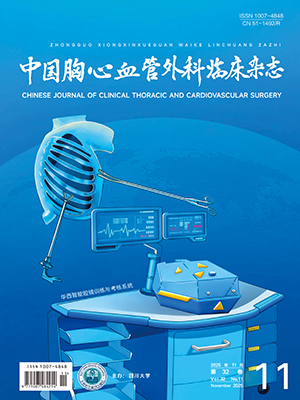Objective To construct large medical model named by "Huaxi HongYi"and explore its application effectiveness in assisting medical record generation. Methods By the way of a full-chain medical large model construction paradigm of "data annotation - model training - scenario incubation", through strategies such as multimodal data fusion, domain adaptation training, and localization of hardware adaptation, "Huaxi HongYi" with 72 billion parameters was constructed. Combined with technologies such as speech recognition, knowledge graphs, and reinforcement learning, an application system for assisting in the generation of medical records was developed. Results Taking the assisted generation of discharge records as an example, in the pilot department, after using the application system, the average completion times of writing a medical records shortened (21 min vs. 5 min) with efficiency increased by 3.2 time, the accuracy rate of the model output reached 92.4%. Conclusion It is feasible for medical institutions to build independently controllable medical large models and incubate various applications based on these models, providing a reference pathway for artificial intelligence development in similar institutions.
Citation:
SHI Rui, ZHENG Bing, YAO Xun, YANG Hao, YANG Xuchen, ZHANG Siyuan, WANG Zhenwu, LIU Dongfeng, DONG Jing, XIE Jiaxi, MA Hu, HE Zhiyang, JIANG Cheng, QIAO Feng, LUO Fengming, HUANG Jin. Construction and application of the "Huaxi Hongyi" large medical model. Chinese Journal of Clinical Thoracic and Cardiovascular Surgery, 2025, 32(5): 587-593. doi: 10.7507/1007-4848.202503081
Copy
Copyright © the editorial department of Chinese Journal of Clinical Thoracic and Cardiovascular Surgery of West China Medical Publisher. All rights reserved
| 1. |
|
| 2. |
国家发展改革委. 国家发展改革委商务部关于《鼓励外商投资产业目录(2020年版)(征求意见稿)》公开征求意见的通知. 中国对外经济贸易文告, 2020, 54: 10-27.National Development and Reform Commission. Notice on Public Solicitation of Opinions on the "Catalog of Industries Encouraging Foreign Investment (2020 Edition) (Draft for Comments)" by the National Development and Reform Commission and the Ministry of Commerce. China Foreign Trade and Economic Cooperation Gazette, 2020, 54: 10-27.
|
| 3. |
中共中央国务院印发《数字中国建设整体布局规划》. 人民日报, 2023-02-28.The Central Committee of the Communist Party of China and the State Council issued the "Overall Layout Plan for Digital China Construction". People's Daily, 2023-02-28.
|
| 4. |
|
| 5. |
国务院办公厅关于推动公立医院高质量发展的意见. 中华人民共和国国务院公报, 2021, 17: 174-178.Opinions of the General Office of the State Council on promoting the high-quality development of public hospitals. Gazette of the State Council of the People’s Republic of China, 2021, 17: 174-178.
|
| 6. |
国务院办公厅发布关于推动公立医院高质量发展的意见, 提出强化信息化支撑作用. 医学信息学杂志, 2021, 42 (6): 95.The General Office of the State Council issued opinions on promoting the high-quality development of public hospitals, proposing to strengthen the role of information technology support. J Med Inform, 2021, 42 (6): 95.
|
| 7. |
张妍. AI+医疗, 近450个应用落地. 深圳商报, 2025-03-11(A03).Zhang Y. AI+healthcare: Nearly 450 applications implemented. Shenzhen Commercial Daily, 2025-03-11 (A03).
|
| 8. |
|
| 9. |
Microsoft Corporation. Microsoft Dragon Copilot : Lle premier assistant vocal IA unifié pour le secteur de la santé. (2025-03-03). Acessed on 2025-04-08.Microsoft Corporation. Microsoft Dragon Copilot : Lle premier assistant vocal IA unifié pour le secteur de la santé. (2025-03-03). Acessed on 2025-04-08.
|
| 10. |
|
| 11. |
|
| 12. |
|
- 1.
- 2. 国家发展改革委. 国家发展改革委商务部关于《鼓励外商投资产业目录(2020年版)(征求意见稿)》公开征求意见的通知. 中国对外经济贸易文告, 2020, 54: 10-27.National Development and Reform Commission. Notice on Public Solicitation of Opinions on the "Catalog of Industries Encouraging Foreign Investment (2020 Edition) (Draft for Comments)" by the National Development and Reform Commission and the Ministry of Commerce. China Foreign Trade and Economic Cooperation Gazette, 2020, 54: 10-27.
- 3. 中共中央国务院印发《数字中国建设整体布局规划》. 人民日报, 2023-02-28.The Central Committee of the Communist Party of China and the State Council issued the "Overall Layout Plan for Digital China Construction". People's Daily, 2023-02-28.
- 4.
- 5. 国务院办公厅关于推动公立医院高质量发展的意见. 中华人民共和国国务院公报, 2021, 17: 174-178.Opinions of the General Office of the State Council on promoting the high-quality development of public hospitals. Gazette of the State Council of the People’s Republic of China, 2021, 17: 174-178.
- 6. 国务院办公厅发布关于推动公立医院高质量发展的意见, 提出强化信息化支撑作用. 医学信息学杂志, 2021, 42 (6): 95.The General Office of the State Council issued opinions on promoting the high-quality development of public hospitals, proposing to strengthen the role of information technology support. J Med Inform, 2021, 42 (6): 95.
- 7. 张妍. AI+医疗, 近450个应用落地. 深圳商报, 2025-03-11(A03).Zhang Y. AI+healthcare: Nearly 450 applications implemented. Shenzhen Commercial Daily, 2025-03-11 (A03).
- 8.
- 9. Microsoft Corporation. Microsoft Dragon Copilot : Lle premier assistant vocal IA unifié pour le secteur de la santé. (2025-03-03). Acessed on 2025-04-08.Microsoft Corporation. Microsoft Dragon Copilot : Lle premier assistant vocal IA unifié pour le secteur de la santé. (2025-03-03). Acessed on 2025-04-08.
- 10.
- 11.
- 12.




